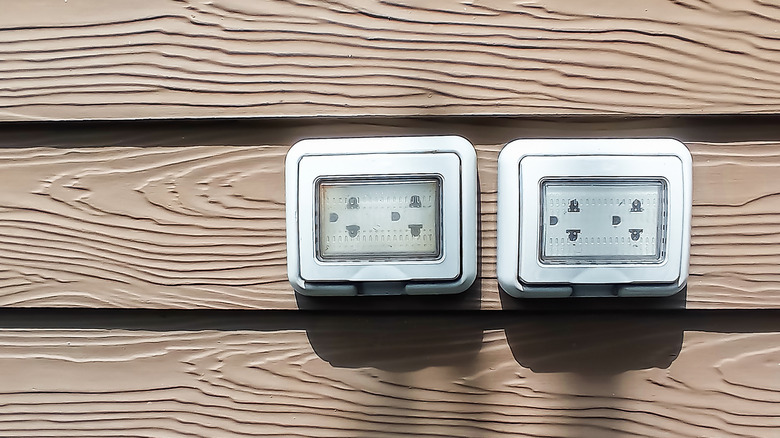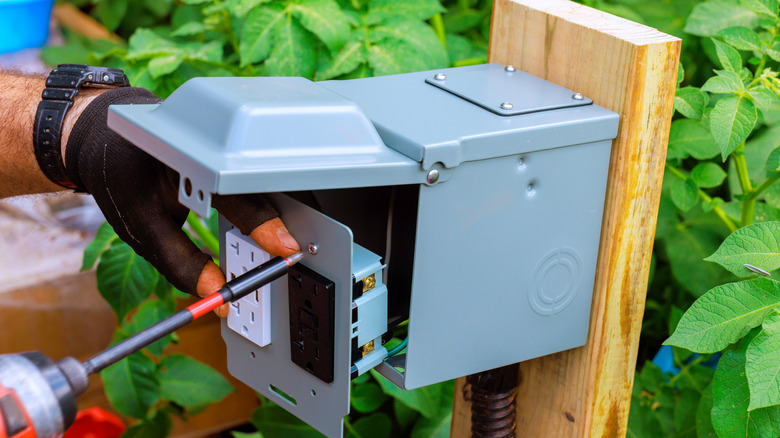What Are Those Boxes On Outdoor Electrical Outlets There For, Anyway?
When you purchase a home, you may notice large boxes covering the outdoor electrical outlets. This is a weather-resistant receptacle outlet box, and it's one of the most common electrical outlets found in every home. Why do outdoor outlets have covers? They need covers to protect them from the elements, including rain, snow, or high humidity exposure. These boxes provide watertight covers that protect the outlet, even when you have an electrical cord plugged into it.
Do you actually need outlet covers on the exterior of your home? Most local building codes require you to follow the National Electrical Code (NEC) when installing all outlets. The NEC says any receptacle exposed to potentially wet conditions and weather must have a cover to seal the interior of the box with the outlet when a cord is plugged in and when it isn't. If you're DIY-ing some lighting ideas for your backyard patio that requires having an electrical cord plugged in all the time, the waterproof cover is an important safety guard.
To achieve waterproof capabilities and to stand up to harsh conditions, such outlet boxes will consist of either PVC, which can withstand all kinds of weather and some impacts, or aluminum, which are impact-resistant and resistant to corrosion when exposed to weather.
Safety considerations when using covers with outdoor outlets
What can happen to outlets that don't have a cover? They'll eventually fail from moisture and water exposure. They might short circuit or start an electrical fire. Plugging an appliance into a wet outlet could cause damage to the appliance. If moisture penetrates the cover and reaches the wiring and metal parts inside the outlet, the parts could begin to rust and corrode, causing a poor connection and intermittent performance.
If you're going to install an outdoor outlet, you'll need to use GFCI outlets in addition to putting in covers. The GFCI design automatically trips itself to cut off electrical flow to prevent fire and the possibility of shock. Is there a difference between indoor and outdoor outlets with GFCI capabilities? The basic operation of the indoor and outdoor GFCI outlets are similar. However, special GFCIs are necessary for outdoor installations. These outdoor GFCI outlets are specifically hardened against temperature fluctuations and slight exposures to moisture.
If you ever notice cracks or other problems with the covers on your outdoor electrical outlets, you might need an electrician to inspect the issue. If the GFCI constantly trips or feels warm to the touch, it may have moisture exposure.

